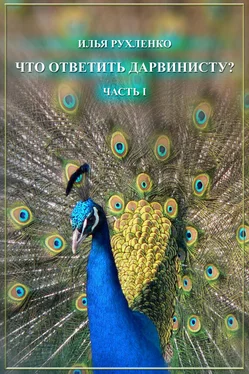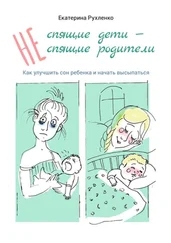А вот в рамках других концепций, биологически нецелесообразные признаки у организмов вполне могут существовать. Например, в русле концепции разумного дизайна , некоторая часть биологической целесообразности вполне может быть принесена в жертву ради каких-то других целей. Например, в пользу чисто эстетическойцелесообразности. То есть, бабочка может быть красиво окрашена именно потому, чтобы быть красиво окрашенной. И никаких других (скрытых) биологически целесообразных причин красивой окраски у этой бабочки просто не имеется.
Кроме того, организмы могут иметь какие-то признаки не только ради эстетики, но и просто ради разнообразия. Например, те же пяденицы, совки или какие-нибудь моли далеко не все выглядят «писаными красавицами». Но вот в однообразии эти семейства бабочек точно не упрекнёшь. Впрочем, как и весь отряд бабочек в целом, и уж тем более, класс насекомых вообще.
Ahn D., Ho R.K. Tri-phasic expression of posterior Hox genes during development of pectoral fins in zebrafish: implications for the evolution of vertebrate paired appendages // Dev Biol. 2008. V. 322. № 1. P. 220–233.
Allen G.R., Midgley S.H., Allen M. Field Guide to the Freshwater Fishes of Australia. Eds. Jan Knight/Wendy Bulgin. Perth, W.A.: Western Australia Museum, 2002. P. 54–55.
Atluri J.B., Samatha B., Bhupathi Rayalu M. Life history, phenology, host plant selection and utilization in the endangered danaid eggfly Hypolimnas misippus // Int. J. Adv. Res. Technol. 2013. V. 2. № 3. P. 117–126.
Bagatharia S.B., Joshi M.N., Pandya R.V., Pandit A.S., Patel R.P., Desai S.M., Sharma A., Panchal O., Jasmani F.P., Saxena A.K. Complete mitogenome of asiatic lion resolves phylogenetic status within Panthera // BMC Genomics. 2013. V. 14. P. 572.
Bejan A., Charles J.D., Lorente S. The evolution of airplanes // J. Appl. Phys. 2014. V. 116. № 4. id.044901; doi: 10.1063/1.4886855
Betancur-R. et al. The Tree of Life and a New Classification of Bony Fishes // PLOS Currents Tree of Life. 2013. Edition 1. doi: 10.1371/currents.tol.53ba26640df0ccaee75bb165c8c26288.
Bininda-Emonds Olaf R.P. et al. The delayed rise of present-day mammals // Nature. 2007. V. 446. P. 507–512.
Bischoff R.J., Gould J.L., Rubenstein D.I. Tail size and female choice in the guppy (Poecilia reticulata) // Behavioral Ecology and Sociobiology. 1985. V. 17. P. 253–255.
Bishop J.A. An experimental study of the cline of industrial melanism in Biston (L.) (Lepidoptera) between urban Liverpool and rural North Wales // J Anim Ecol. 1972. V. 41. P. 209–243.
Bishop J.A., Cook L.M., Muggleton J. (a) The response of two species of moths to industrialization in northwest England. I. Polymorphism for melanism // Philos Trans R Soc Lond B Biol Sci. 1978. V. 281. P. 489–515.
Bishop J.A., Cook L.M., Muggleton J. (b) The response of two species of moths to industrialization in northwest England. II. Relative fitness of morphs and population size // Philos Trans R Soc Lond B Biol Sci. 1978. V. 281. P. 517–542.
Blut C., Wilbrandt J., Fels D., Girgel E.I., Lunau K. The «sparkle» in fake eyes – the protective effect of mimic eyespots in lepidoptera // Entomol Exp Appl. 2012. V. 143. P. 231–244.
Bolhuis J.J., Okanoya K., Scharff C. Twitter evolution: converging mechanisms in birdsong and human speech // Nat. Rev. Neurosci. 2010. V. 11. P. 747–759.
Brakefield P.M. A decline of melanism in the peppered moth, Biston betularia in the Netherlands // Biol J Linn Soc Lond. 1990. V. 39. P. 327–334.
Brakefield P.M., Liebert T.G. Evolutionary dynamics of declining melanism in the peppered moth in the Netherlands // Proc R Soc Lond B Biol Sci. 2000. V. 267. P. 1953–1957.
Breuker C.J., Brakefield P.M. Female choice depends on size but not symmetry of dorsal eyespots in the buttefly Bicyclus anynana // Proc. Biol. Sci. 2002. V. 269. № 1497. Р. 1233–1239.
Brilot B.O., Normandale C.L., Parkin A., Bateson M. Can we use starlings’ aversion to eyespots as the basis for a novel ‘cognitive bias’ task? // Applied Animal Behaviour Science. 2009. V. 118. P. 182–190.
Brower L.P. Chemical defence in butterflies. / In: The Biology of Butterflies. Ed. by Vane-Wright R.I., Ackery P.R. Academic Press, London, 1984. P. 109–134.
Buck M., Marshall S.A., Cheung D.K.B. Inentification atlas of the Vespidae (Hymenoptera, Aculeata) of the northeastern Nearctic region // Canadian Journal of Arthropod Identification. № 5. P. 1 – 492.
Calkins J.D., Burley N.T. Mate choice for multiple ornaments in the California quail, Callipepla californica // Animal behaviour. 2003. V. 65. P. 69–81.
Carde R.T. Precopulatory Sexual Behavior of the adult gypsy moth / In: The gypsy moth: research toward integrated pest management. Ed. by Doane C.C., McManus M.L. Technical Bulletin 1584, Forest Service, US Department of Agriculture, Washington, 1981. P. 572–587.
Chen A.H., Lubkowicz D., Yeong V., Chang R.L., Silver P.A. Transplantability of a circadian clock to a noncircadian organism // Science Advance. 2015. V. 1. № 5. P. e1500358.
Charnov E.L., Schaffer W.M. Life history consequences of natural selection: Cole’s result revisited // American Naturalist. 1973. V. 107. P. 791–793.
Clarke C.A., Mani G.S., Wynne G. Evolution in reverse: clean air and the peppered moth // Biol J Linn Soc Lond. 1985. V. 26. P. 189–199.
Cole L.C. The population consequences of life history phenomena // The Quarterly Review of Biology. 1954. V. 29. P. 103–137.
Cook L.M. Changing views on melanic moths // J Linn Soc. 2000. V. 69. P. 431–441.
Cook L.M. The rise and fall of the carbonaria form of the peppered moth // Q Rev Biol. 2003. V. 78. P. 399–417.
Cook L.M., Askew R.R., Bishop J.A. Increasing frequency of the typical form of the peppered moth in Manchester // Nature. 1970. V. 227. P. 1155.
Cook L.M., Grant B.S., Saccheri I.J., Mallet J. Selective bird predation on the peppered moth: the last experiment of Michael Majerus // Biol. Lett. 2012. V. 8. P. 609–612.
Coyne J.A. Not black and white // Nature. 1998. V. 396. P. 35–36.
Cuevas J.M., Elena S.F., Moya A. Molecular basis of adaptive convergence in experimental polulations of RNA viruses // Genetics. 2002. V. 162. № 2. P. 533–542.
Czerkas S., Feduccia A. Jurassic archosaur is a non-dinosaurian bird // Journal of Ornithology. 2014. V. 155. № 4. P. 841–851.
Dakin R., Montgomerie R. Peahens prefer peacocks displaying more eyespots, but rarely // Animal Behaviour. 2011. V. 82. № 1. P. 21–28.
DasGupta S., Ferreira C.H., Miesenböck G. FoxP influences the speed and accuracy of a perceptual decision in Drosophila // Science . 2014. V. 344. P. 901–904.
Читать дальше
Конец ознакомительного отрывка
Купить книгу











